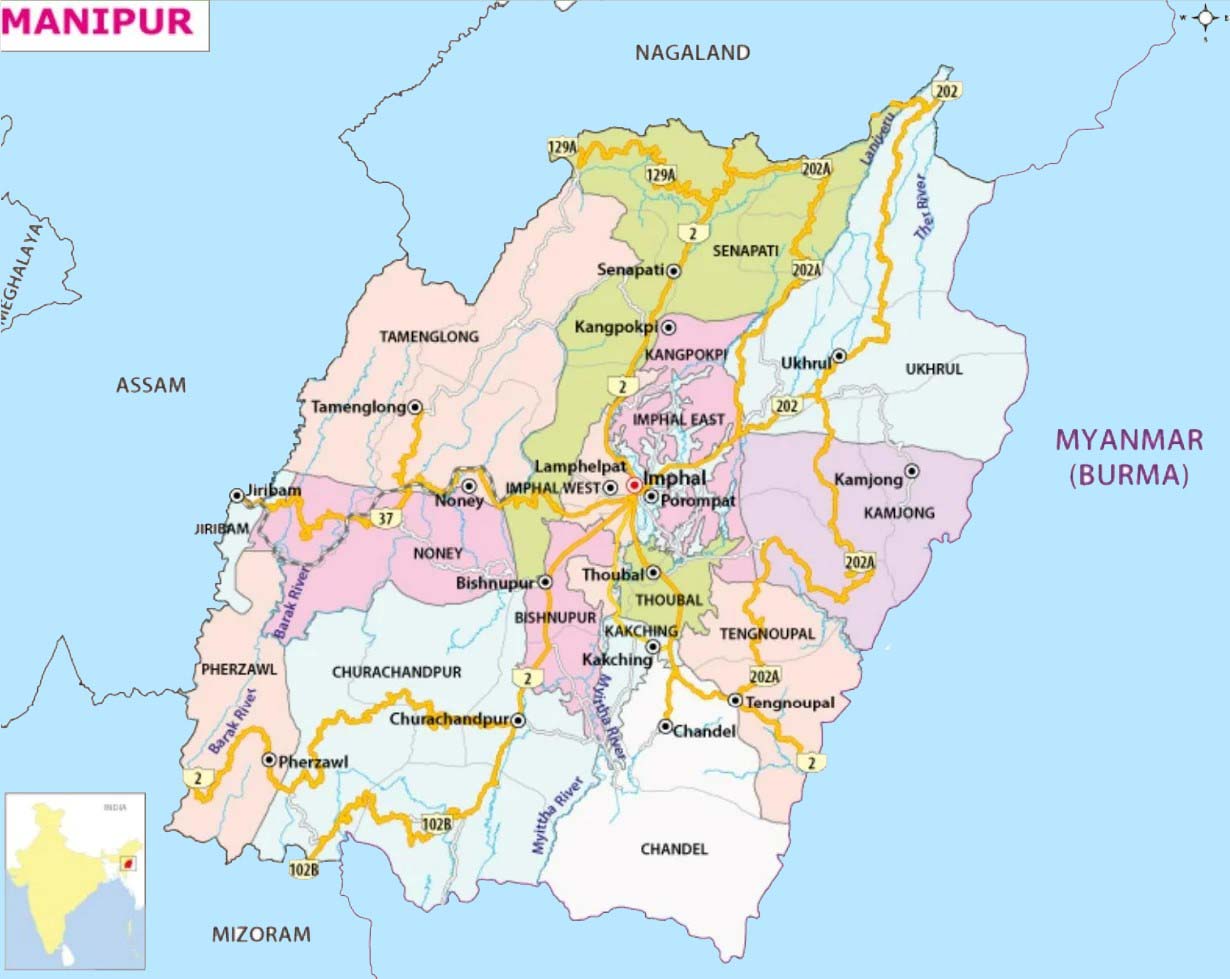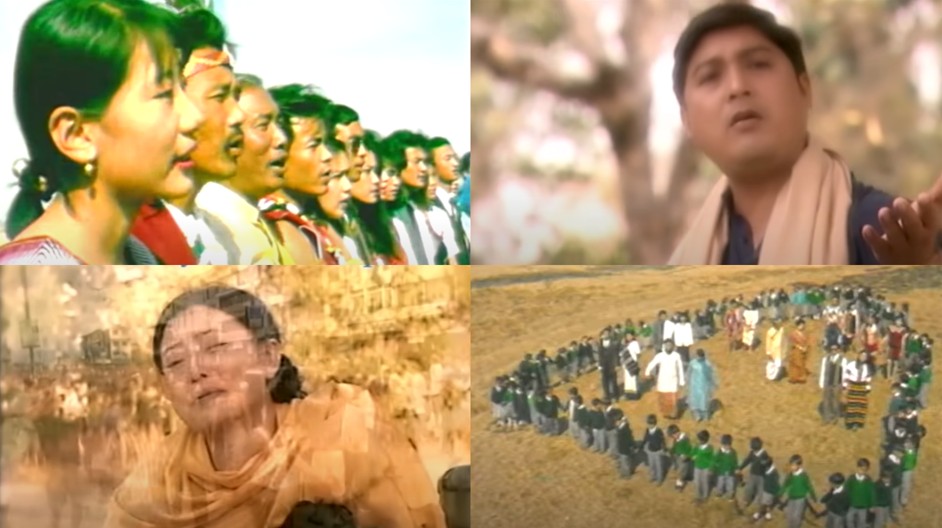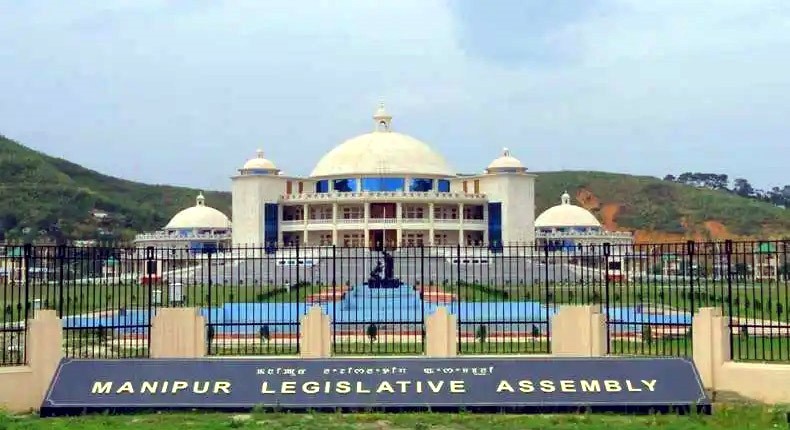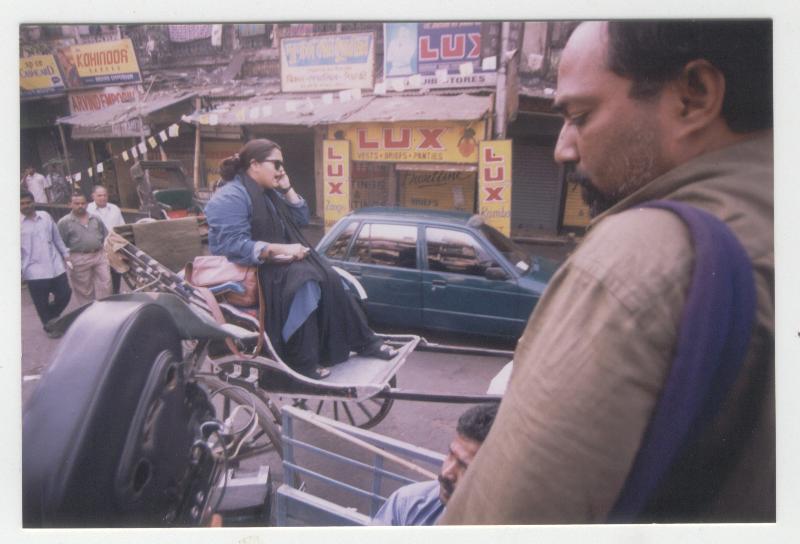Even as the violent conflict between the Kuki-Zomi militants and Meiteis, which the Kuki-Zomi militants from the surrounding hills attack the Meiteis at the foothills to dominate the geographical areas as their exclusive territory, has continued for more than 462 days; Manipur Chief Minister Nongthombam Biren on August 12 has informed Manipur Assembly that the government will take the necessary steps to reorganise district boundaries.
The Chief Minister also criticised the mindset of certain communities which view district boundaries through an ethnic lens, saying it was “most unfortunate and detrimental to peace and harmony”.
Criticising further the way some of the State’s districts were created, he accused past governments of drawing boundaries that served their “political interests” and not administrative convenience.
“While it is clearly mentioned that creation of districts is for administrative conveniences, it serves as political conveniences as regards to some districts,” Chief Minister Biren said.
Expressing his disappointment with the commonly held belief that districts are divided based on ethnicity, Manipur Chief Minister Nongthombam Biren on August 12 emphasised the need for a comprehensive “reorganisation of districts” that involves thorough consultations with both legislatures and covil society organisations.
Stating that “our people do not consider themselves as Manipuri first”, Chief Minister Biren lamented this mindset as a pressing issue plaguing the state.
Chief Minister Biren made the statement on the floor of the House on the last day of the 6th Session of the 12th Manipur Legislative Assembly in response to a calling attention motion raised by ruling partner Naga National Front (NPF) MLA Leishiyo Keishing, drawing attention to the unresolved boundary demarcation of the newly created seven districts of Manipur.
Here, it may be mentioned that in the order dated December, 08, 2016 creating the seven new districts, in Para 3 therein it was clearly mentioned that the district boundaries will be as per the existing boundaries of the concerned sub-divisions and in the event of any disputes relating to the district boundaries, the matter will be decided by a Districts Boundary Commission headed by a Retired Judge of the High Court, with Administrative Secretaries of Home, Revenue and Tribal Affairs and Hills of the State Government as members.
The Congress government led by Okram Ibobi Singh on December 8, 2016 had created seven new districts from the earlier nine districts for the admnistrative convenience. The seven new districts are: Kangpokpi (instead of a long standing demand by the Kukis for a separate Sadar Hills district carved out from parts of the predominantly Naga populated district of Senapati); Tengnoupal (carved out from the predominantly Naga district of Chandel); Pherzawl (Hmar predominant areas of Kuki-Zomi-Paite-dominated Churachandpur); Noney (earlier a part of Zeliangrong Naga-dominated Tamenglong), Jiribam (Jiribam was a subdivision located 216 km away from the district headquarter and 214 km away from Imphal carved out from Imphal East), Kamjong (bifurcated from Tangkhul’s Ukhrul district) and Kakching (carved out from Thoubal district).
Raising concerns about the unresolved district boundaries of the newly created seven districts, MLA Leishiyo highlighted that the formation of Kangpokpi district, formerly known as Sadar Hills, was done despite several Memoranda of Understanding (MoUs) signed between the Central Government and the affected people. The agreement was disregarded, and the new district Kangpokpi was formed, he said.
NPF MLA Leishiyo Keishing said that despite various issues and demands made to the Central Government, the new district was created without consulting the stakeholders. Many villagers are still facing various inconveniences after the creation of the new districts, Leishiyo informed.
Leishiyo also highlighted how the formation of Kangpokpi district in 2016 had affected the political aspirations and other opportunities of many Tangkhul and Rongmei Nagas.
Addressing concerns raised by NPF MLA Leishiyo Keishing that the formation of the Kangpokpi district in 2016 had affected the political aspirations and other opportunities of many Tangkhul and Rongmei Nagas, Chief Minister Nongthombam Biren who is also in charge of Land Resources said that several Naga residents of Kuki-Zomi-Paite-dominated districts of Churchandpur and Kangpokpi had met with him recently, claiming that they were not receiving essential services, commodities, and opportunities in their districts and that they were being “illegally taxed”.
The Chief Minister acknowledged the complaints that some villages were incorrectly assigned to new districts and called for a statewide survey involving village authorities, community leaders, CSO leaders and legislatures to address these issues. CM Biren added that there are also calls for the rollback of some newly created districts.
Chief Minister Biren claimed that all of these issues had come up because the new districts never took care of the needs of local communities.
The district boundaries were created based on ethnicity, not administrative convenience. As a result, many people are suffering due to the district boundaries. The re-organisation of district boundaries based on administrative convenience instead of political or ethnic considerations needs to be done; however, converting it into action could be challenging, said Chief Minister Biren.
Even though there were no direct oppostion to creation of seven new districts in 2016 from the people of the new districts, the United Naga Council (UNC), the apex body of Nagas of Manipur imposed economic blockade on the National Highway 2 and 37, the only lifelines of Manipur from November 1, 2016 to protest against the creation of seven new districts.
After the Bharatiya Janata Party (BJP) government led by Nongthombam Biren came into power in 2017, the UNC lifted the 139 days economic blockade on the midnight of March 19, 2017. The resolution of the lifting of the indefinite blockade was taken following an agreement in a tripartite talk on March 19, 2019 at Senapati between the Government of India (GOI), Governmenr of Manipur (GOM) and UNC including representatives of its constituents – All Naga Students’ Association Manipur (ANSAM) and Naga Women’s Union (NWU).
However, the UNC continues its opposition to the creation of seven new districts on December 8, 2016 by the then Government of Manipur. On September 27, 2023 again, the UNC reiterated its rejection of the declaration of seven new districts.
The UNC in the release issued on September 27, 2023 said that in the wake of the ethnic conflict that has engulfed the state of Manipur since May 3, 2023 in the midst of violently manifested geographical and demographic contestation between the conflicting parties, it has become critical for the Nagas to bring out to the public domain the unsettled issue of the rejection of the creation of seven new districts on December 8, 2016 by the then Congress ruled state Government of Manipur.
“The Nagas have rejected the declaration of seven new districts on December 8, 2016 and strongly demonstrated the rejection with mass rally held in Naga district headquarters on December 15, 2016 and the 139 days of economic blockade along the National Highways in the past,” the release added.
The release mentioned that the 10 rounds of tripartite talks between the Government of Manipur, the UNC and the Government of India on the issue of the above creation of new districts was based on the recognition that “there was nonadherence to the 4 (four) memorandum of Understanding” signed by the government of Manipur with Naga organisations and the assurance of the government of India on the matter.
The United Naga Council has clearly placed in the public domain and in its memorandum to the government of India that the Nagas will not accept any disintegration of Naga land or any act that will adversely affect the interest of the Nagas while attempting to address demands by any other community.
Therefore, the United Naga Council reiterated its position against the arbitrary, undemocratic, unconstitutional and divisive declaration of seven new districts of December 8, 2016 by the Ggovernment of Manipur and any subsequent decision or ruling passed by any institution or authority on the matter stands rejected and shall be vehemently opposed till the same is withdrawn, the release warned.
To rectify the errors of the past will surely prove to be beneficial to all concerned and restore confidence and goodwill in the system, the UNC said.
While there is no vehement opposition from the people of the newly created seven districts, the stake of other communities particularly Nagas and Meiteis is very high over the formation Kangpokpi district now dominated by the Kukis.
Notably, Imphal East district is puzzled with Kangpokpi district.
The transformation of Sadar Hills under Senapati district as Kangpokpi district is one of the factors which embolden the Kuki-Zomi-Paite leaders – both militants and politicians to claim a swathe of Manipur as exclusive territory for them.
If the present ongoing violent conflict between the Kuki-Zomi militants and Meiteis that erupted on May 3, 2023 in Churachandpur and its adjoining areas of Bishnupur district is analysed using conflict analysis tools, reorganisation of districts after the merger of Manipur with India on October 15, 1950 is one of the roots of the conflict.
The violent conflict between Kuki-Zomi militants and Meitei has witnessed close to 230 deaths and 32 persons are reported still missing while 1,108 persons were wounded. More than 60,000 people are now languishing in relief camps across the state and at their relative’s homes. At least 5,172 houses were burned down and destroyed. At least 386 religous structures including 254 churches and 132 temples were destroyed.
Taking the context of the conflict into account, overhaul reorganisation of districts of Manipur exclusively based on administrative reasons and convenience of the people is needed for a United Manipur where all the ethnic groups can co-exist and co-develop together. Reorganisation of districts can also be part of the solution to the conflict if it is done at the right time and handled with a meticulous planning. Otherwise, reorganisation of district boundaries may become a flashpoint for another exacerbated violent conflict involving Kukis, Nagas and Meiteis.












